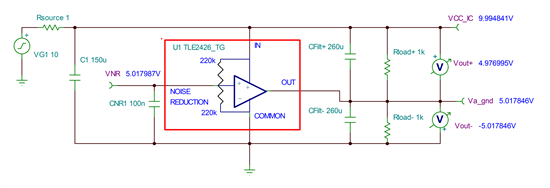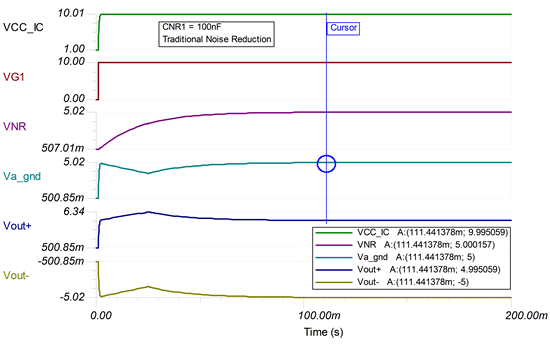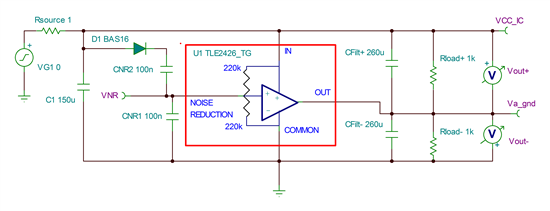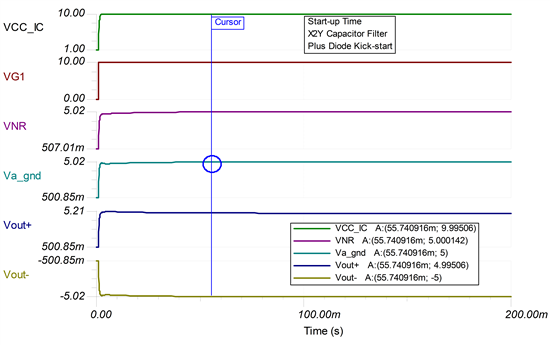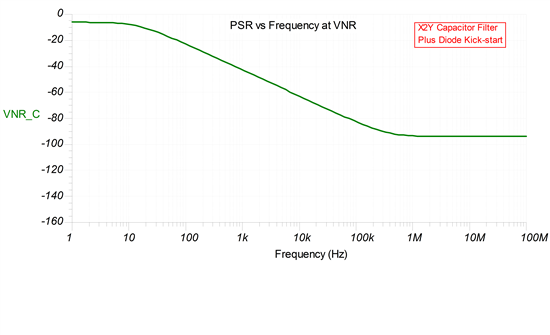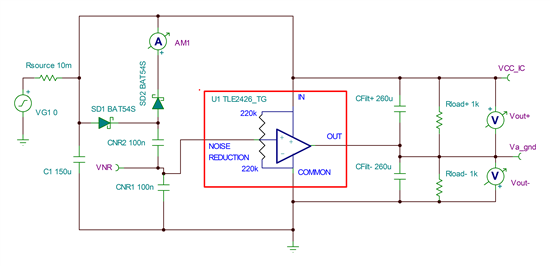**Click on images to enlarge.
Just about every single-supply application uses a “supply splitter” to create a mid-point reference that is ½*Vcc. Texas Instruments makes an IC dedicated to that purpose called the TLE2426. Now, before you quit reading because you think I am trying to sell you something, hear me out. The below information is valid for the TLE2426 as well as ANY supply splitter you design on your own. Engineers often encounter a slow start-up time when using a supply splitter, due to necessary capacitor filtering for low noise. Today, I’ll discuss how to minimize start-up times when designing for applications that require a supply splitter.
Figure 1 shows a typical supply splitter application using the TLE2426. Watch out; most op amps will not be stable with capacitors on the output. TLE2426 is designed specifically for large capacitor load values.
Note: Do not put capacitors on op amp outputs without proper stability compensation!
Figure 1: TLE2426 as a typical supply splitter
In Figure 1, capacitor CNR1,(100 nF) is used to reduce the noise at VNR of the two 220 kohm resistors, which are used to create a mid-supply reference voltage. The 220 kohm resistors are chosen to minimize power consumption but add to the noise at VNR. Using the circuit of Figure 1 and TINA-TI, we can test the start-up time using the CNR1 capacitor. Figure 2 shows the start-up waveforms using CNR1. Let’s use the time from t=0 to the time when Va_gnd = 5.0 V as our measurement of start-up time. For the traditional noise filter, it takes 111.44 ms to start up.
Figure 2: Start-up waveforms using CNR1
To fix our start-up problem we could hang a second capacitor from VNR to VCC_IC. You will find that for an improvement, the two capacitors need to be closely matched in initial tolerance and over temperature. Enter the “X2Y” capacitor.
In Figure 3, we show the schematic of the X2Y capacitor. On X2Y capacitors, the initial tolerance may be +/-10%, but the two “Y” capacitors in the package closely match each other for initial value and drift. This means the “X” capacitor value will be precisely one-half the “Y” capacitor value, which is useful in common mode plus differential filter applications.
Figure 3: X2Y capacitors offer matched CNR1 = CNR2
My solution would have been finished except that my esteemed colleague, John Caldwell, asked me, “What about PSR?” Matched capacitors from VNR to VCC_IC and VNR to GND yield a constant PSR of ½ or -6 dB over frequency. Figure 4 is our final circuit for start-up testing using the X2Y Capacitor Plus Diode Kick-start circuit. In Figure 5, we use our standard time from t=0 to the time when Va_gnd = 5.0 V as our measurement of start-up time. We see start-up time of 55.74 ms. Comparing this profile to the traditional capacitor filter, we see a very fast turn-on time with complete final value settling in 55.74 ms. The traditional capacitor filter still wanders about after 50 ms.
Figure 4: X2Y Capacitor Plus Diode Kick-start
Figure 5: Start-up waveforms using X2Y Capacitor Plus Diode Kick-start
Figure 6 shows the PSR vs frequency at VNR results of our final circuit. There is very good PSR at >1 kHz to about 350 kHz where PSR flattens to -94 dB. The lower the diode capacitance, the higher out in frequency this flattening will occur and the better the PSR will be at higher frequencies. You can achieve the same results by increasing the values of the capacitors CY1C and CY2C. If one looks at the PSR spec of most op amps, this PSR curve is much better than the PSR of the op amp itself. Further background investigation reveals you still need matched capacitors to have the diode kick-start work effectively over part variance and temperature.
The design trade-offs of the X2Y Capacitor Filter Plus Diode Kick-start circuit include:
1) Higher values of CY will improve PSR rejection at higher frequencies.
2) Higher values of CY will take longer for settling to final values on VNR, Vout+, Vout-, Va_gnd.
3) Lower capacitance on D1 will improve PSR rejection at higher frequencies.
Figure 6: PSR vs frequency at VNR
For fast start-up times on supply splitter circuits, consider filtering the mid-supply reference resistor divider with an X2Y capacitor by using one “Y” capacitor to ground and the other “Y” capacitor to Vcc. This ensures rapid start-up in manufacturing with part variances from lot to lot and over temperature. Remember to improve PSR by adding the diode kick-start to your design for the best performance.
Related resources:
Techniques to solve op amp stability issues
Addendum:
Immediately after publishing this blog, another esteemed colleague, Collin Wells, pointed out that during power-off, there could be substantial discharge current (amount directly depends upon the source impedance, Rsource) from CNR1 and CNR2 running through the input ESD protection diode (from op amp +input to Vcc), common in most op amps. He proposed the clean solution below by using a dual Schottky diode, BAT54S. This also will discharge CNR1 and CNR2 quickly for a clean start-up at the next power-on.
Figure 1A: Dual Schottky diode protects op amp input during power-off

